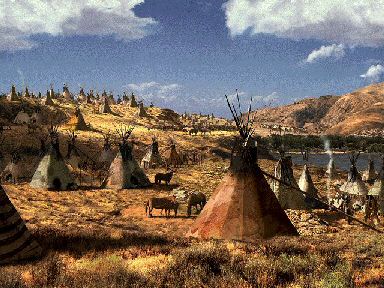Political & Economic Organizations - Additional Reading
This book will provide additional information on the historical Political & Economic Organization of First Nations and Inuit.
Traditional Social Organization
Social structures answer questions such as: How should food be acquired and distributed? Who should make decisions? How should conflict be resolved?
Traditional First Nations and Inuit social organizations revealed a high degree of cooperation and mutual support because individuals relied on people around them for all of their needs.
 A large extended family was necessary in order to perform all the work necessary for day-to-day life including taking care of shelter, food, transportation and defense needs.
A large extended family was necessary in order to perform all the work necessary for day-to-day life including taking care of shelter, food, transportation and defense needs.
The primary living group of most First Nations varied with the season. People living in the area now called Alberta usually lived in extended family groups during the winter and larger groups at certain points in the summer. Group size was not based on a certain number or family size limit, but instead on practical requirements. Groups had to be big enough to provide for themselves, but not so big that they had to struggle.